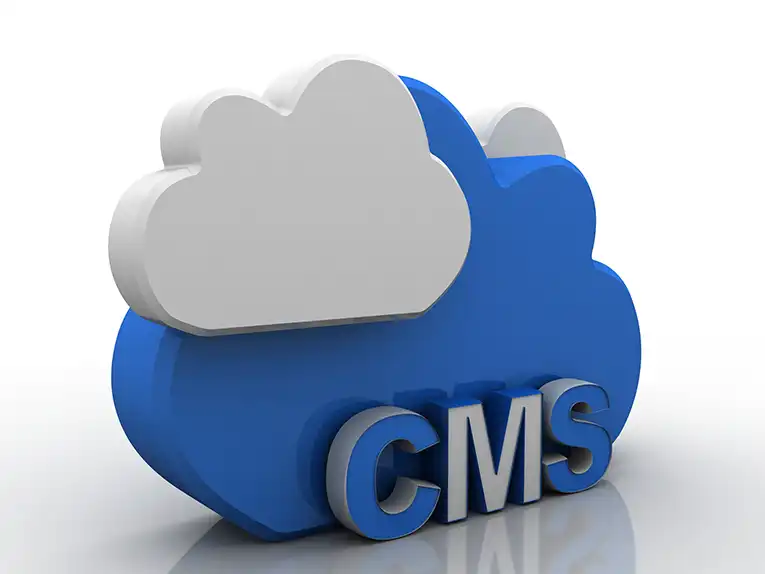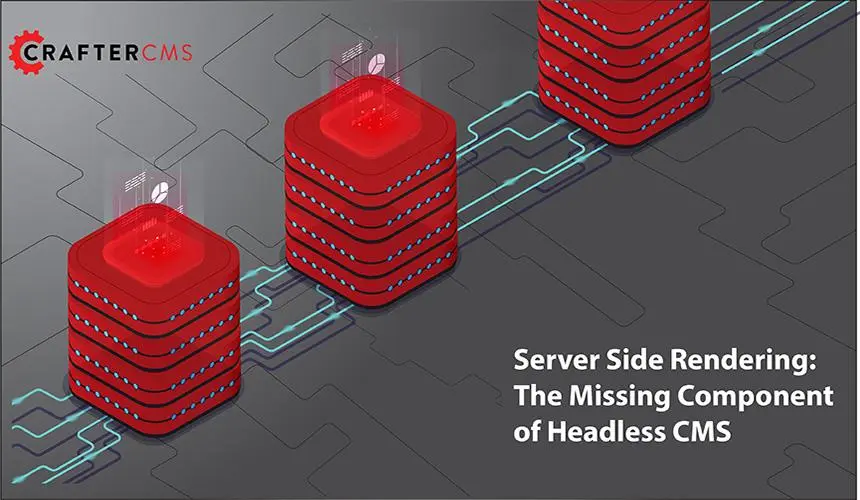Headless CMS RFP Template: The Ultimate Guide For Selecting the Right Content Platform

Amanda Jones

Selecting a headless CMS isn’t a straightforward process, particularly with so many stakeholders and when so many options are available. There is no one platform that is the best overall; instead you must find the solution and vendor that is the best choice for your unique business requirements.
A request for proposal (RFP) can help you evaluate the options at your disposal and quickly determine if the platform you are considering can adequately meet your needs today and continue to help your organization meet its long-term goals.
In this post, we’ll point out why an RFP matters, how to start building one today and provide a customizable RFP template highlighting the most important elements you should look for when evaluating an enterprise-grade headless CMS. Consider this a starting point that can be extended with your unique requirements.
Download our free 130+ question RFP template now: Headless CMS RFP Template (Google Sheet)
Why An RFP Matters
An RFP refers to the process and the documentation used when soliciting proposals for a content management system required by an enterprise organization. It outlines the criteria that must be met by those companies that feel they will meet the requirements. It also includes an explanation of how vendors will be evaluated, commercial terms and conditions, and what vendors should have in their responses.
When submitting a request for proposal to any CMS vendor, you must clearly articulate your requirements regarding features, hosting, integrations, performance, security, and other business-critical needs. This helps narrow the list of vendors so that only those with a clear solution to meet those requirements respond. It can also help you to anticipate your total cost of ownership over the lifecycle of your CMS.
An RFP also helps you ensure that you are entering into the right long-term relationship with a vendor with a sound foundation and a proven track record, and one that won’t disappear when your business needs it the most.
What to Consider Before Building an RFP
Our customizable template will provide you with several questions that can help you evaluate the capabilities of your next headless CMS vendors. However, there are some additional details you should consider that will be relevant to your business’s unique requirements.
- Goals: What are your business goals and objectives for the medium term? What pain points are you trying to alleviate? Knowing what matters to your business will help determine the proper functionality for your CMS.
- Non-Negotiables: Once you know your goals, you can outline your non-negotiable, must-have functionality. This will help you quickly eliminate vendors who don’t meet your criteria and narrow the list to those who can.
- Timeline: Evaluating a headless CMS is a critical step, but you also need to factor in the time for implementation of the new CMS, migration from the old CMS, and how that impacts the other targets you want to hit.
- Budget: Another critical factor when evaluating CMSs is knowing the budget you will have to work with, as the total cost of ownership can play a major role in whether or not a CMS can be added to your shortlist.
Our template also allows you to rank each of the vendor responses according to these and other organizational needs and constraints.
Building Your Shortlist
Given the intensive nature of a request for proposal, it’s recommended that you build a shortlist beforehand. Using the RFP template and other publicly available resources from each vendor, your internal stakeholders can assess the headless CMS market to see who meets the criteria and who needs to be immediately ruled out.
Before sending out RFPs to vendors, you should have a list of at most ten vendors, ideally closer to five or six. While it might be tempting to select only those vendors that leading research analysts list, the likelihood is just as high that you will uncover others that fit your criteria and better align with your budget, timeline, and support requirements.
Categories to Consider In Your RFP
Information about the CMS product's differentiation, the company behind it, and both the content authoring and developer experience are just a few of the categories that should be considered when constructing your headless CMS RFP.
Product Information
Questions about the CMS product help determine if the team's vision aligns with your business and its goals. You can also determine if they cater to your particular industry. Asking for product roadmap and feature updates and a marketplace of integrations, if available, can tell you if the company already carries appropriate plugins or plans to develop additional features that you need sooner rather than later.
Company Information
Knowing the state of the vendor as a viable company can play a significant role in their longevity and ability to support your business as a customer. The number of employees, locations, and funding raised will also impact their available resources for product development, customer support, and other activities.
System Architecture
Enterprises today need a modern CMS to successfully meet customer demands and adapt to changes in the market. Whether it is open source or proprietary could be important for your organization. Headless architecture, following MACH principles, a high level of composability, and the ability to seamlessly integrate with third-party services are some of the capabilities that should be considered.
Information Architecture
Support for a robust information architecture is essential for any headless CMS. It ensures that teams can create the right content types and models to properly organize and manage content within the CMS before publishing on different channels.
Content and Experience Management
A modern headless CMS does more than just produce content but instead manages the entire digital experience. You should know what capabilities are present to enhance that experience, whether personalizing the experience, publishing across multiple channels, localizing content, or incorporating generative AI.
For public facing sites and apps, the presence of additional marketing features can prove helpful for any business. You should clearly understand which features matter the most to your organization based on the other tools in your technology stack. Personalization features, analytics, and A/B testing will be some marketing functionality to consider.
Search Engine Optimization
Headless CMSs can provide SEO benefits, including increased website loading speeds and performance. However, it’s necessary for the system you choose to also seamlessly integrate metadata, structured data, friendly URLs and other critical SEO elements. This ensures that content is user-friendly and easily discoverable by search engines, ultimately improving visibility and ranking in search results.
Content Authoring Experience
The content authoring experience is arguably the most critical consideration for a headless CMS. Knowing whether or not the vendor offers an intuitive interface and user-friendly experience will be essential to the happiness and productivity of the marketing team and other content teams. Also, other important factors are live previews, visual editing, and the ability to customize the interface to suit different requirements.
Developer Experience
At the minimum, developers will expect a headless CMS to support all types of front-end development frameworks (i.e., framework-agnostic). However, their experience will also be impacted by the comprehensiveness of the APIs and the quality of the documentation, as well as how easy it is to troubleshoot and solve problems with the help of a robust community.
Workflow and Publishing
Enterprises generally require detailed workflow and publishing capabilities. As such, questions about these functions will help you understand how team members can collaborate, the types of roles that can be created, and any authentication features to prevent the wrong people from accessing different areas of the CMS. Access to version control features often present in Git-based CMSs can also be relevant for many organizations.
Accessibility
A headless CMS with accessibility features is essential for creating inclusive digital experiences. It enables content creators to easily implement accessible design principles and ensure that the content is usable and navigable by individuals with disabilities.
Security
Security should also be a major consideration for an enterprise-grade headless CMS. You will need to assess whether the vendor has earned any security certifications, how seriously they take compliance, how they keep data safe, and the protocols in place for a disaster.
Hosting
Hosting and deployment options can be make or break for enterprises. From the vendor's cloud provider to whether they can provide self-hosted/self-managed on public or private cloud hosting options must be considered.
Performance
Headless CMSs promise improved performance and scalability in several ways. It will be important to ask whether the vendor can offer elastic scaling, limits on number of API calls and/or call rates, regions supported, and more.
Pricing
The pricing structure can matter a lot when selecting a headless CMS. Knowing the factors influencing pricing, from the number of users and projects to the API calls used, will help find a CMS that falls within budget.
Implementation and Production Support
After purchasing a CMS, the next stage will involve setup and implementation. Make a mistake with an implementation and even the most robust and feature-rich CMS will struggle to perform as it should. Questions about the support available to help with implementation or if you run into any issues will be crucial for getting the most out of the CMS.
What to Do After the RFP Process
Once you’ve completed your shortlist, sent out RFPs, and received feedback from vendors, the next step is finding the perfect headless CMS for your enterprise. To do this, you must ask vendors for live demos and walkthroughs of their platform to ensure that it looks like it will meet most or all of what you expect from an enterprise-grade CMS.
Demos only go so far, however. So your next step should be a proof of concept or trial sandbox for developers and content authors to use to further validate whether the platform is the right fit for them. Vendors should be able to provide you a 30- to 90-day free evaluation period. Be sure to have your evaluation criteria and use cases defined beforehand, to make the most out of your trial.
Download our free 130+ question RFP template now and start selecting your headless CMS today: Headless CMS RFP Template (Google Sheet)
Related Posts

Navigating the Future of Digital Experiences: A Deep Dive into Emerging Trends

Amanda Jones

Building Personalized Digital Experiences for a Cruise Liner

Sara Williams

CrafterCMS Wins More G2 Awards Spring 2024

Amanda Lee

What Is a Cloud CMS? (Unlocking the Benefits of a CMS in the Cloud)

Sara Williams










